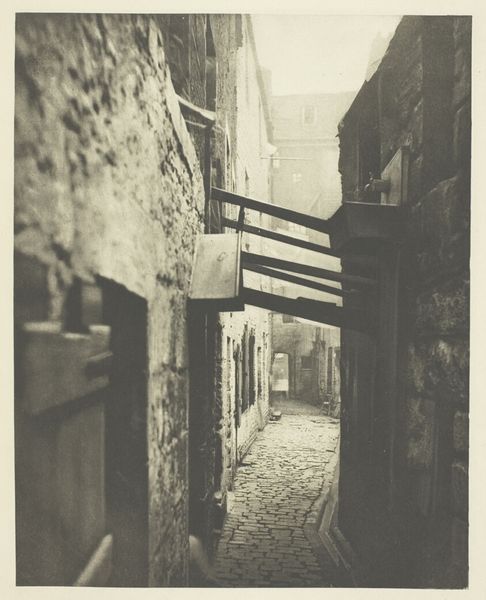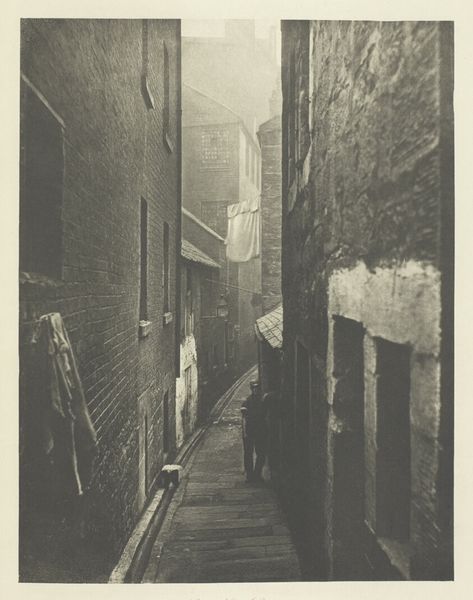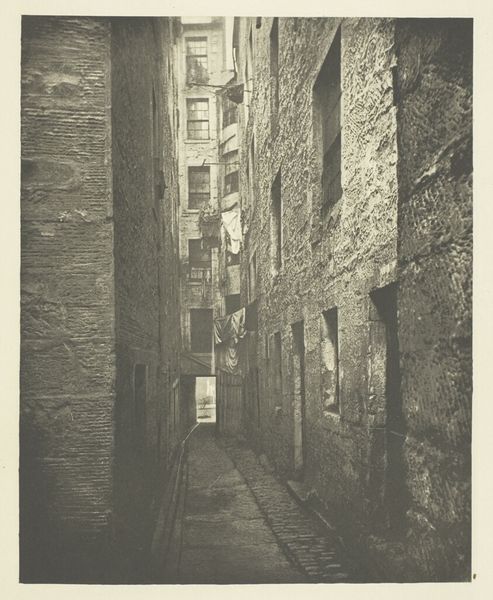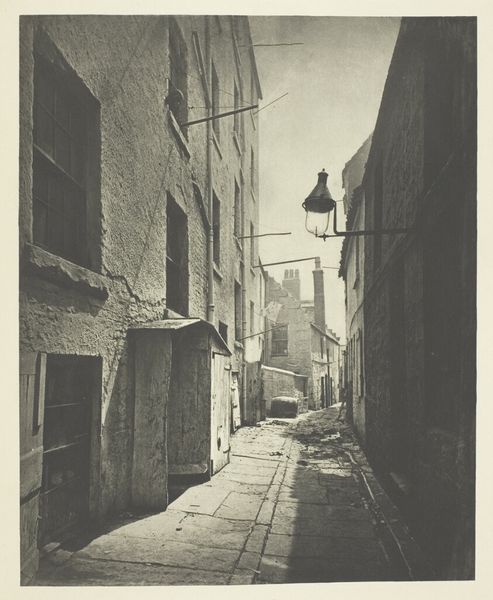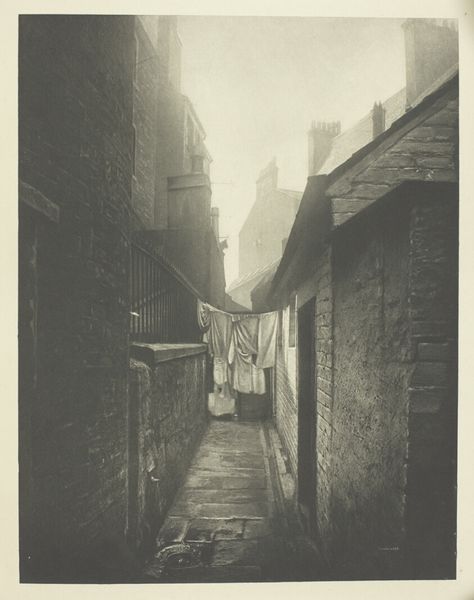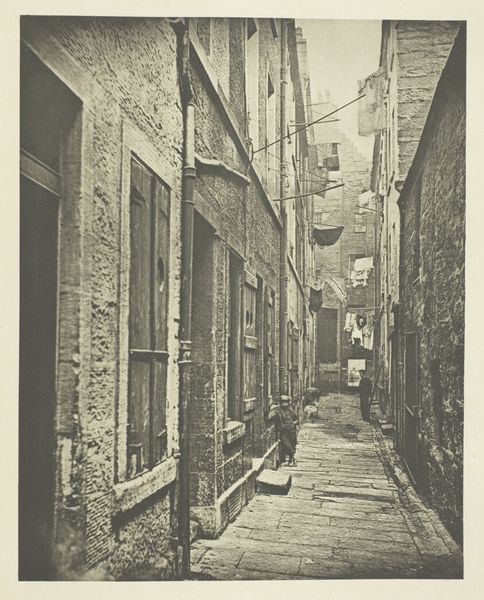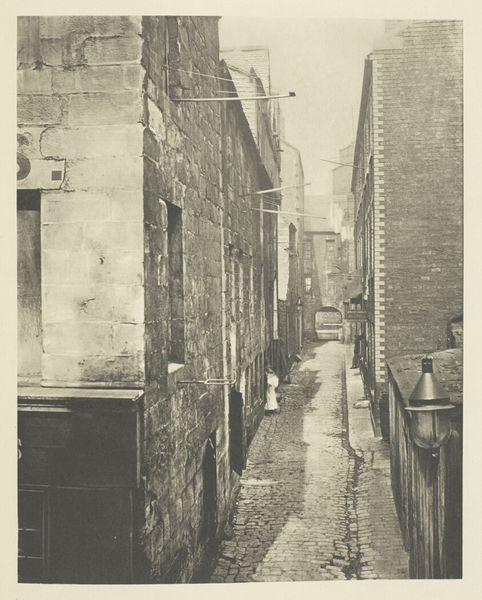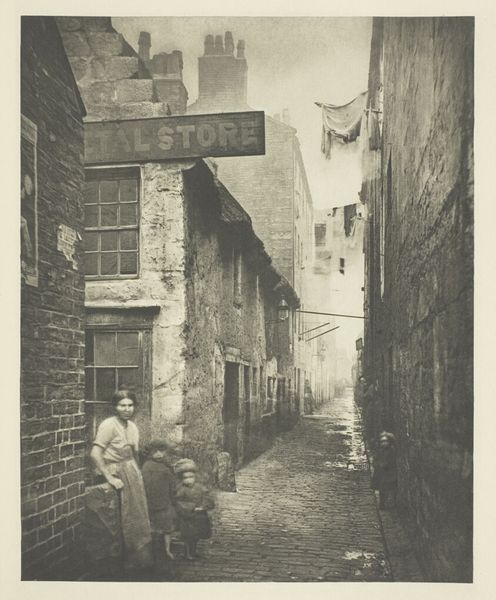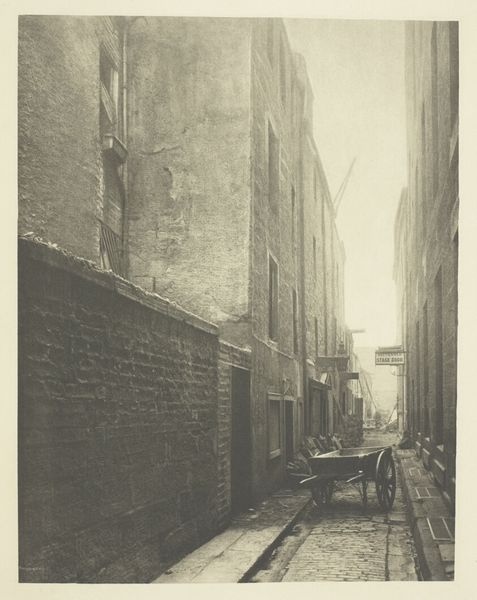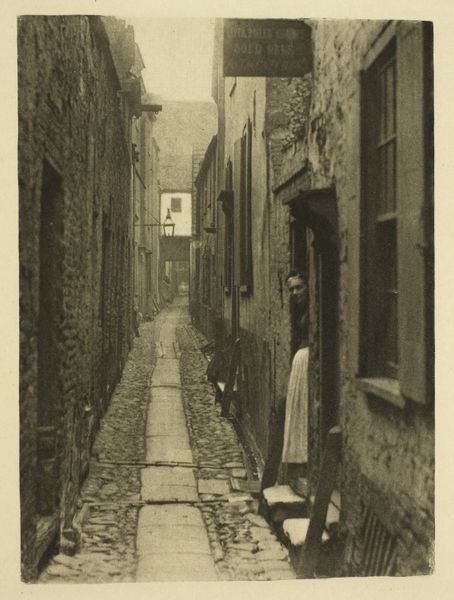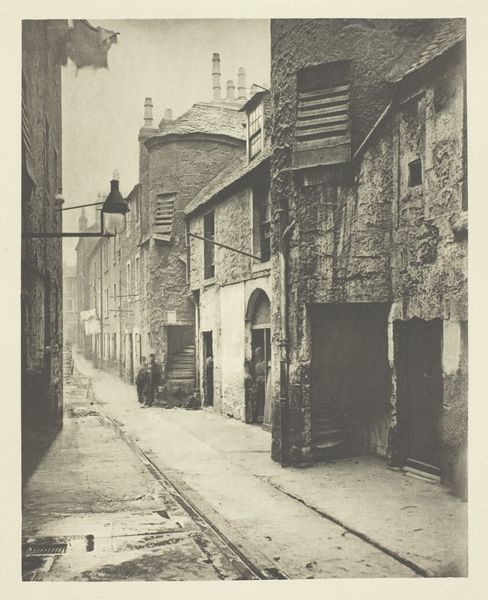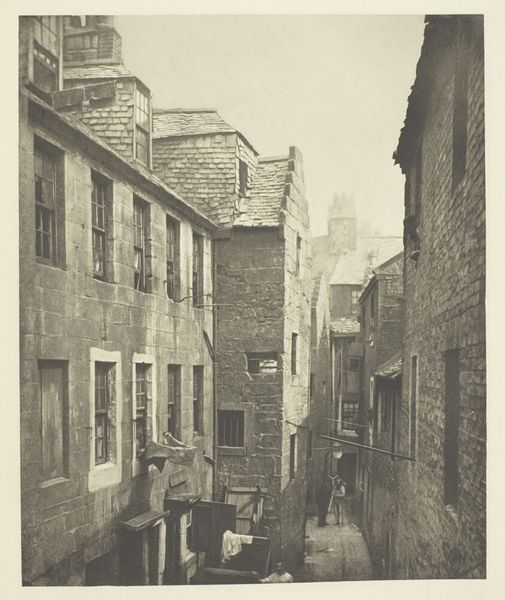
print, photography
#
print photography
#
16_19th-century
# print
#
archive photography
#
street-photography
#
photography
#
historical photography
#
cityscape
#
realism
Dimensions: 22.5 × 17.5 cm (image); 38.1 × 27.2 cm (paper)
Copyright: Public Domain
Curator: Looking at "Close No. 101 High Street," a print made in 1868 by Thomas Annan, I’m struck by the density of the architecture and the way light filters through the narrow alleyway. Editor: It certainly conveys a sense of enclosure. There’s a palpable stillness here, despite the laundry hanging overhead. The tonality is almost monochrome, heightening the claustrophobia. Curator: Annan documented the old closes of Glasgow as they were being demolished for urban renewal. This photograph acts as a cultural artifact, memorializing a way of life that was vanishing. Think about the "close" itself – a narrow passage, almost a birth canal into the city's underbelly. Editor: I see what you mean about the city's underbelly. From a formal perspective, the converging lines of the buildings create a strong sense of depth, leading the eye towards the light at the end of the alley. But that light feels almost ominous, not necessarily welcoming. Curator: That touch of ominous light is key; there’s a melancholy baked into these images. Consider the placement of the clothes. It is not so subtly suggesting intimate daily life right above that dark close, where all manner of unknown interactions happened. Editor: Right, they add a layer of the everyday, the quotidian made stark by the somber setting. I’m interested in the texture Annan captures. The rough surfaces of the buildings feel almost palpable, speaking to the materiality of the space. Curator: Absolutely. He captures the accumulated history embedded in these stone walls. One of the functions of documentary images such as this is to highlight marginalized peoples living in what city planners perceived as blight—this act of bearing witness preserves and offers an iconoclastic, or alternative perspective to a specific narrative. Editor: Yes, you bring it all together with the sense of place as memory. The formal structure amplifies the documentary intent. The composition isn't just about aesthetics; it's about constructing a narrative. Curator: In observing all this, it forces one to remember that, even in absence, things and objects—such as clothes hanging—may still hold significant importance within visual narratives. Editor: The photograph operates then on dual registers of seeing and remembering; this intersection deepens its visual significance and communicative strength.
Comments
No comments
Be the first to comment and join the conversation on the ultimate creative platform.
